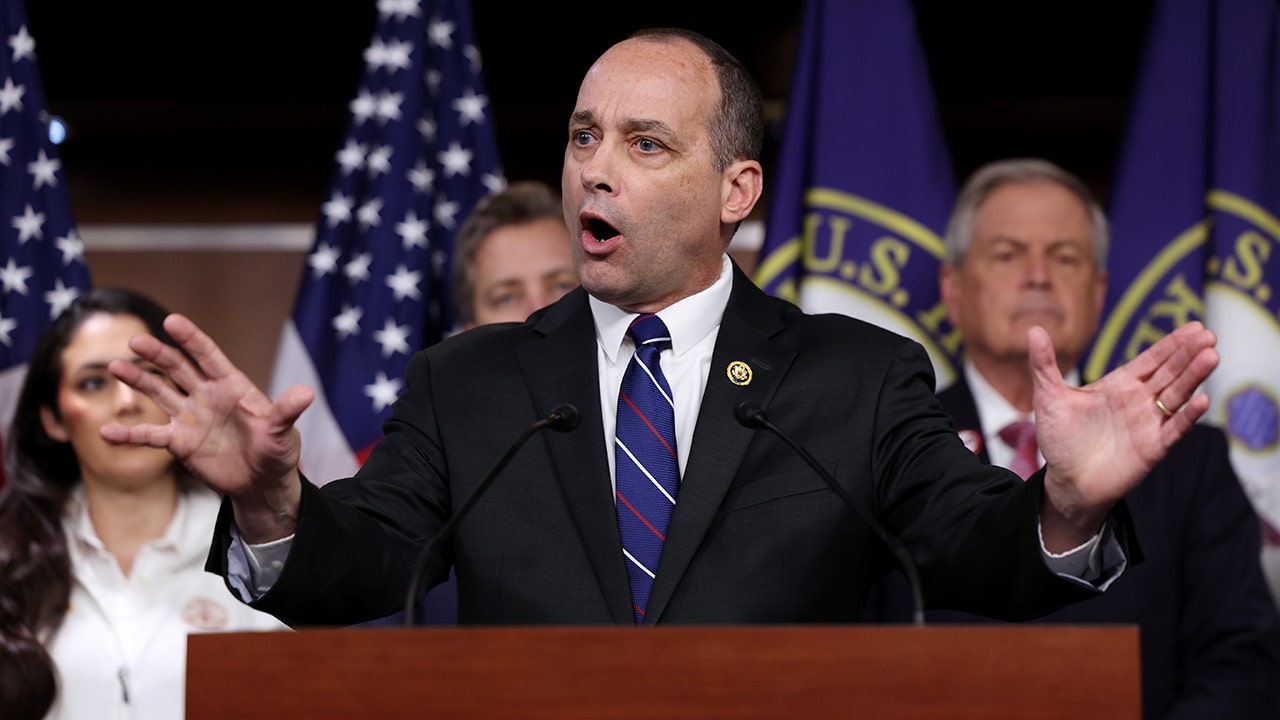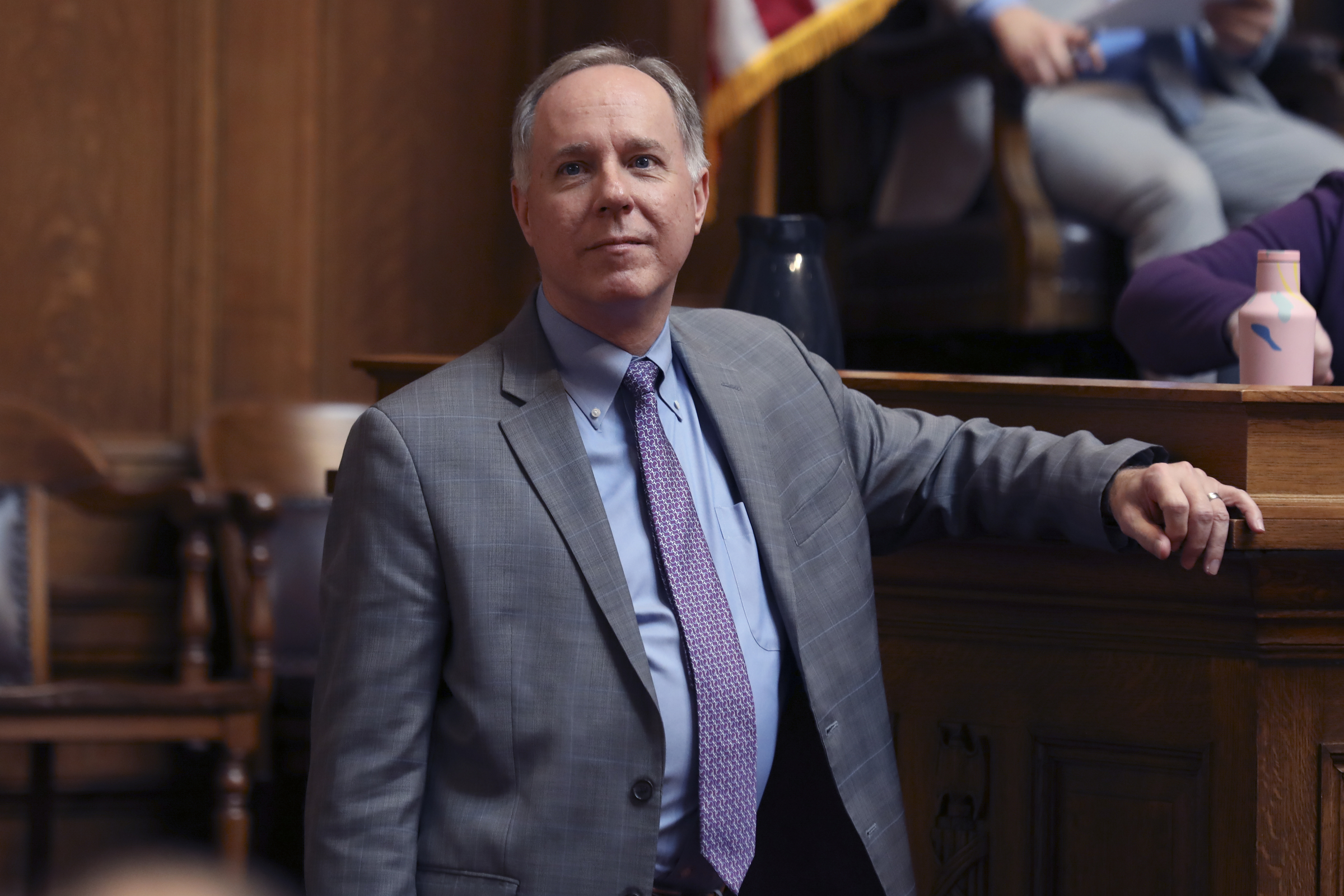Vermont
More than 4 million skiers braved Vermont’s weird, wet winter

Vermont ski areas saw just a slight decrease in total visitors this past winter, a surprise after a challenging first half to the season.
Statewide industry association Ski Vermont announced last week that alpine ski areas reported 4.1 million skier and rider visits, down 0.5% from the prior year, a smaller dip than the rest of the Northeast region and the country.
But inconsistencies in the November and December weather contributed to significant differences in snow conditions among mountains. For example, one got enough snow to open early — and another was delayed when the same storm fell as rain.
Cross-country ski areas struggled nearly across the board, disadvantaged by the lack of snowmaking as a stopgap measure.
Nonetheless, Ski Vermont president Molly Mahar considered the season to be successful, all things considered, with a late-season boost aided by Vermont’s total solar eclipse in April.
She said in an interview that she was glad the decrease wasn’t worse, given the chaotic weather and the more than 6% drops in visits experienced across the region and country.
While statewide numbers reflected a relative success, many remember last season far from fondly.
“Why do you have to bring me back to last year? God…,” said Geoff Hatheway, president of Magic Mountain in Londonderry, when asked about the challenges of the winter.
Magic Mountain was hit harder than many resorts further north by early-season hiccups — namely, it kept getting too warm. Its staff updated skiers frequently on Facebook throughout November and December, reporting temperatures too high for most of the day to make enough snow.
Several rainstorms, including one just before Christmas, set back the mountain’s snowmaking progress and delayed its opening date, but Hatheway said staff were able to open some trails between Christmas and New Year’s Day. Still, effectively missing out on the December crowds and seeing low snowfall through Martin Luther King Jr. Day weekend meant that Magic Mountain underperformed on two of the three biggest ski weekends of the year.
Elsewhere in Vermont, the story was completely different: Further north, Bolton Valley president Lindsay DesLauriers said Bolton was able to hit its opening day target of Thanksgiving weekend with some help from the very same weather that was hurting Magic Mountain.
“A lot of the rain was snow for us,” she said, thanks in part to Bolton Valley’s elevation.
She added that snowmaking upgrades also helped — so despite perception of a bad winter, Bolton Valley’s metrics were strong this year. In terms of total operating days, in fact, it had its best year in the last six.
Mad River Glen marketing/events manager Ry Young said the mountain actually opened its lifts earlier than initially planned because of the heavy snowfall because people had started hiking up the mountain to ski its trails.
“We couldn’t stop people from skinning, so we decided just to open and make some money,” Young said.
At Magic Mountain, snowfall woes continued until the start of March, when it had seen only half its forecasted total, according to Hatheway. Fortunately, he said, with two big snowstorms in March and early April, it was able to finish the season on a high note, closing April 7 with 100% of its trails open.
“If we can just move that back a few months next year, that would be great,” Hatheway said, laughing.
A similar pattern held across Vermont, as storms in March and April brought in large late-season crowds and buoyed a season that started off slow.
“I honestly thought we were going to be off by more than this,” Mahar said of how the statewide numbers looked mid-spring.
The second of the two auspicious late snowstorms was followed a week later by an even rarer event: the total solar eclipse that cast northern Vermont in darkness and brought crowds from all over on Monday, April 8.
According to Mahar, many of those eclipse tourists got some skiing in while they were here, making a long weekend out of the spectacle.
“That supercharged the early April business,” Mahar said.
At Bolton Valley, in the path of totality, DesLauriers said many skiers set up lawn chairs for the three minutes of darkness, during which time Bolton had to close the lifts to ensure safety.
She said that Bolton Valley restricted the number of lift tickets sold for that day, thinking many of its season pass holders would visit and wanting to leave enough room for everyone. Though that didn’t occur as much as executives were expecting — DesLauriers theorized that pass holders, more likely to be local, largely watched the eclipse from home — she said it was still a busy day, the cherry on top of a strong end to the season.
“It was a really fun scene,” DesLauriers said. “And great for business, it’s typically slow on Mondays, but it was like a regular weekend day.”
Again, though, not everybody reaped the same benefits from the eclipse: Magic Mountain, in Windham County well south of the path of totality, had shut down its lifts for the season the day before.
Mahar said it was hard to quantify exactly how much the eclipse helped the season’s strong finish overall, but ski areas in the path of totality reported full occupancy that day, according to Ski Vermont.
Mahar credited improved snowmaking technology as one big reason for the relatively strong season. But she said that the challenging weather had a particularly damaging impact on ski areas that do not make artificial snow — notably, almost all of Vermont’s cross-country skiing areas.
Cross-country skiing visits were down 49.6% from last year, according to Ski Vermont.
“We can’t control the weather, and it’s a very weather-dependent business,” said George Robinson, owner of Blueberry Lake Cross Country Center in Warren.
Robinson said business was down around 30% from last year at Blueberry Lake. The biggest hit was when rain came through in mid-December and the ski center didn’t have any skiable snow on the ground all the way until mid January, forcing it to miss the big holidays entirely.
Most downhill areas, and recently some cross-country areas, make their own snow to have more of a safeguard against fluctuations in weather patterns. But Robinson said he is not considering doing so at Blueberry Lake.
“I’m completely against it,” Robinson said, citing concerns about climate change. “I do not think it’s right for us to be putting energy into making snow when that energy is what created the problem for us in the first place.”
Snowmaking has gotten more energy-efficient with recent technology, Mahar said, but it remains rare in cross-country areas because of the practicality of making enough snow to cover a more sprawling area.
Craftsbury Outdoor Center, which does make snow, uses it only on a couple of the smaller, central trails in its network. But communications director Sheldon Miller said it helped the organization to perform fairly well this winter — specifically because of the unique way in which it uses the technology.
Faculty and students from UVM help Craftsbury do what they call “snow storage” over the summer months, a practice Miller said isn’t entirely new but much more common in Europe. Storing snow entails making a large pile of artificial snow in January, when it’s most efficient to make snow and they often already have enough for the trails, Miller said. That pile then gets covered with several feet of wood chips to stay cold through the summer. Then right around Thanksgiving, the snow is extracted and blown out onto a short loop.
Craftsbury is the only cross-country area to practice snow storage not only in Vermont, but in the contiguous 48 states, according to UVM.
“Two kilometers isn’t the zenith of everybody’s nordic skiing experience,” Miller said. “But it’s nice just to get back on the snow.”
It’s also a nice buffer for their early season, Miller said, especially in a year like this where heavy snow only came on the later side. Unfortunately, he added, Craftsbury closed for the season before the two big storms in March and April came through, so it missed the late boom.
It hasn’t gone completely perfectly, though. Miller said that the season before last, after staff laid out all the stored snow and two days later the weather warmed back up, Craftsbury somewhat bitterly named the early season route “Mother Nature Always Wins.”
Though all of Vermont’s ski areas are looking to adapt in one way or another, they tend to agree on this fact. DesLauriers was careful to admit Bolton Valley’s limitations in its own efforts to weatherproof the ski season.
“I won’t say regardless of what Mother Nature throws at us, because she’s more powerful than anything,” she said. “But we’re definitely putting safeguards in place.”

Vermont
Police investigating death of teen after incident at Vt. high school

JERICHO, Vt. (WCAX) – Police are investigating the death of a teen following an incident at a Vermont high school.
Vermont State Police say they were called to Mount Mansfield Union High School in Jericho at about 4 p.m. on Thursday for a report of a person who appeared to be stuck underneath a vehicle in the parking lot.
Troopers immediately began to render aid to the 18-year-old man. He was rushed to the hospital in Burlington, where police say he later died.
Police have not yet released the teen’s name so his family can be notified.
Investigators say the incident does not appear suspicious.
Copyright 2024 WCAX. All rights reserved.
Vermont
Climate Matters: Big victories for greener energy in Vermont – Addison Independent

GREG DENNIS
The Legislature last week achieved several milestones on the way to reducing climate pollution — even in the face of Gov. Phil Scott’s best efforts to keep Vermont stuck in the age of fossil fuels.
A greener Renewable Energy Standard — long a goal of 350Vermont and others — passed despite Gov. Scott’s veto. So did a set of improvements to Act 250 that will open some towns and cities to much needed residential development while better protecting the biodiversity of sensitive areas.
In the process, Scott’s anti-environmental vetoes have placed him even to the right of some of his natural allies. More on that below. First, a little background.
It used to be that veto overrides were as rare in Vermont as snowstorms in July. But in Montpelier these past two years, it’s been snowing all summer. Gov. Scott has been lobbing veto snowballs at the General Assembly, and legislators have responded with an avalanche of overrides.
Scott, a Republican in an overwhelmingly Democratic state, has had six vetoes overridden during each of the past two legislative sessions.
This year, the governor even went after the birds and the bees. He vetoed (and was overridden on) a bill banning neonicotinoid pesticides that contribute to the decline of vital pollinators. He declined to sign two bills that became law: VPIRG’s “make big oil pay” bill, and a bill to protect wetlands and floodplains from the more extreme weather of our deteriorating climate.
Now back to Scott’s rightward shift as the climate crisis worsens.
His vetoes of Act 250 changes and the Renewable Energy Standard (RES) came even though traditionally conservative power blocs supported the bills.
The RES, for example, was endorsed by virtually all the state’s utilities, which are normally political allies of the Republican governor. Much of the hard work to improve the RES was accomplished in a working group that included the utilities and was headed by Rep. Amy Sheldon, D-Middlebury, and Addison County Sen. Chris Bray.
Under the new RES, Vermont is committed to achieving nearly 100% renewable electrical energy by 2030. The law also aims to double the amount of clean energy (mostly solar and wind) produced in the state and regionally. It will mean more green jobs and less burning of dirty oil and gas.
On revisions to Act 250, Scott also found himself to the right of political allies. The bill he vetoed drew support not just from environmental groups but also from the development industry and the Vermont Chamber of Commerce. In a statement supporting its passage, the chamber said a portion of the bill was “a top priority for the Vermont business community.”
Perhaps overlooked in all this were two other achievements pushed by 350Vermont and others.
The grassroots group recognized the potential of thermal energy networks to generate cleaner community energy and use it more efficiently. That approach, which avoids the need for burdensome bureaucracy, gained approval this session. So, too, did a study committee to suggest ways to protect lower-income Vermonters from electricity rate hikes.
Vermonters have a lot to celebrate at the end of this biennium. Working as a tighter coalition, advocates pushed the General Assembly to approve substantial climate legislation — and to make those approvals stick during the difficult task of overriding multiple vetoes.
Joan Baez used to sing of “little victories and big defeats.” Too often that’s been the experience for the climate movement even here in the Green Mountain State. This year, though, Vermonters can sing a song of big victories.
Vermont
Girls on the Run Vermont celebrates 25th anniversary – The Charlotte News

Girls on the Run Vermont, a statewide nonprofit organization for girls in third-eighth grade, wrapped up its 25th anniversary season that served 1,683 girls across the state.
Twenty-five years ago, 15 girls at Vernon Elementary School enrolled in the Girls on the Run program. Since then, the program has served 39,000 girls and is thriving.

Girls warm up in their pink attire for a 5K run in Essex in early June.
Program participants, alumnae, coaches, parents, board members and supporters attended two statewide 5K events in June to enjoy the non-competitive, community-based events on June 1 at the Champlain Valley Exposition in Essex Junction, and on June 7 in Manchester.
Proceeds from the 5K events benefit Girls on the Run Vermont’s Every Girl Fund. This fund helps to ensure that every girl in Vermont can participate. This year’s 5K events brought together a combined 4,000 attendees, including program participants, family, friends and community members.
One participant at each 5K event was honored and presented with the Girls on the Run Vermont Rick Hashagen Alumni Scholarship Award in the amount of $2,500. Cordelia King from Fairfax was recognized in Essex and Alexandra Gregory of Dummerston was recognized in Manchester. These scholarships are renewable for up to three more years and offer up to $10,000 in total to support their education post high school.
Find out more about Girls on the Run Vermont.
-

 News1 week ago
News1 week agoNYC pastor is sentenced to 9 years for fraud, including taking a single mom's $90,000
-

 Movie Reviews1 week ago
Movie Reviews1 week agoFancy Dance (2024) – Movie Review
-

 News1 week ago
News1 week agoRead the Ruling by the Virginia Court of Appeals
-

 Crypto1 week ago
Crypto1 week agoIdris Elba Promotes Cryptocurrency in West Africa – BORGEN
-

 Politics1 week ago
Politics1 week agoTrump targets House Freedom Caucus chair in intra-party Republican primary feud
-

 News6 days ago
News6 days agoTracking a Single Day at the National Domestic Violence Hotline
-

 Politics7 days ago
Politics7 days agoTrump classified docs judge to weigh alleged 'unlawful' appointment of Special Counsel Jack Smith
-

 News6 days ago
News6 days agoSupreme Court upholds law barring domestic abusers from owning guns in major Second Amendment ruling | CNN Politics














